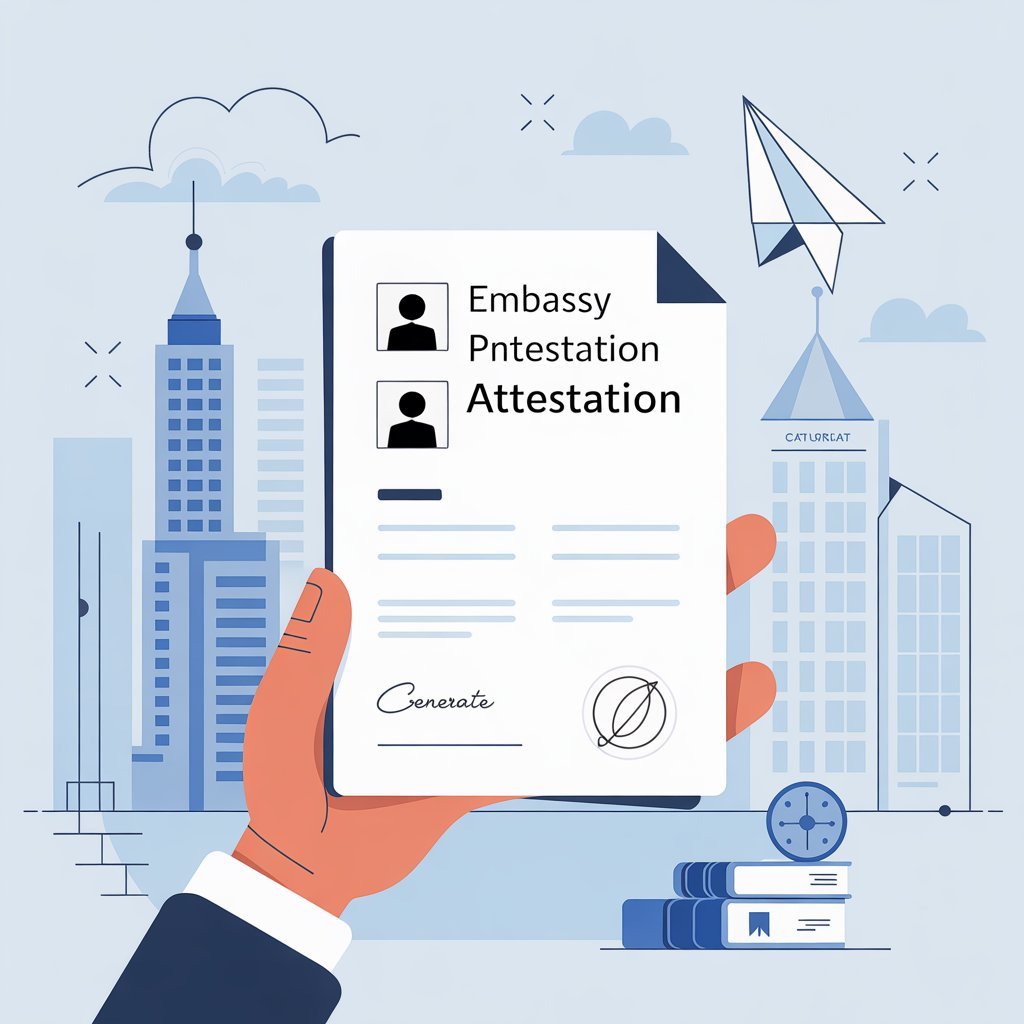Certificate Attestation Process in India – Step-by-Step Guide
What is Certificate Attestation? Certificate attestation confirms your official papers are real. It proves your documents, like diplomas or birth certificates, are true copies for use in another country. People need attestation for many reasons, such as moving for work, applying for college, or getting married abroad. This step makes sure your documents are accepted when you are far from home. Attestation is important because it adds an official stamp of approval. Foreign governments need to trust that the documents you show them are genuine. This process assures them that a rightful authority truly issued your papers. Without it, your documents might not be valid in other nations. Why is Certificate Attestation Necessary? You need certificate attestation to make your documents legally usable outside your home country. Without it, your foreign employment offers might fall through. An un-attested degree could stop your overseas study plans. This official verification makes sure your life can continue smoothly, no matter where you go. It stops fraud and keeps international dealings honest. Types of Documents Requiring Attestation Many types of documents need attestation depending on your goal. Knowing which ones helps you prepare. Each category has its own reasons for needing this special stamp. Educational Certificates (Degrees, Diplomas, Transcripts): These prove your academic achievements are real. They are vital for job applications or further studies in a foreign country. Without attestation, your hard-earned qualifications might not be recognized. Personal Documents (Birth Certificates, Marriage Certificates, Divorce Certificates): These establish your identity and marital status. They are often needed for immigration, visa applications, or registering a birth in a new country. Proving your personal history is true is key. The Multi-Stage Attestation Process Explained The attestation process can seem long, but it follows a clear path. Your document moves through different offices, each adding its own verification. Think of it as a journey for your papers. Stage 1: Notary Public Verification The first stop for your document is usually a Notary Public. A Notary Public checks your document’s authenticity. They also verify the identity of the person signing it. This step is like getting a first official nod that your document is real before it moves to bigger offices. Stage 2: Home Department/Secretariat Verification (State Level) Next, your document often goes to a state government department. This could be the Home Department or the General Administration Department. This stage confirms that the authority who first issued your document was real. It proves the document didn’t just appear from nowhere. This state-level check adds an important layer of trust. Stage 3: Ministry of External Affairs (MEA) Attestation (Central Level) After state-level checks, your document reaches the Ministry of External Affairs (MEA). The MEA is the central government’s main office for foreign relations. Their attestation makes your document valid for international use. This stamp shows that your home country’s government backs your document. It is a major step. Stage 4: Embassy/Consulate Attestation (Foreign Country’s Representation) The final and most crucial step is embassy or consulate attestation. The embassy or consulate of your destination country provides this. This last stamp means the foreign country agrees to accept your document. It’s the ultimate seal of approval for your papers to be valid abroad. Your document is ready for use once this is done. Specialized Attestation: Apostille vs. Legalization When your documents need authentication for another country, two main paths exist. These are Apostille and Embassy Legalization. Which one you need depends mostly on where your document is going. What is an Apostille? An Apostille is a simpler type of authentication. It’s for countries that are members of the Hague Convention. This is an international agreement that streamlines the process. An Apostille certificate replaces many of the complex steps of traditional legalization. It’s often faster and more convenient. Real-world Example: Imagine a teacher from the US wants to work in Spain. Since both countries are part of the Hague Convention, her teaching degree will likely need an Apostille. This single certificate proves her degree is real, saving her many steps. What is Embassy Legalization? Embassy Legalization is the traditional, multi-step attestation process. This method applies to countries that are not part of the Hague Convention. It involves all the stages previously discussed, ending with the embassy’s stamp. This can take more time and effort. Conclusion Certificate attestation is a vital, yet often intricate, process. It ensures your important documents are recognized and valid in other countries. Understanding each stage and the roles of different authorities makes a big difference. This includes the initial notary check, state and central government approvals, and final embassy validation.

